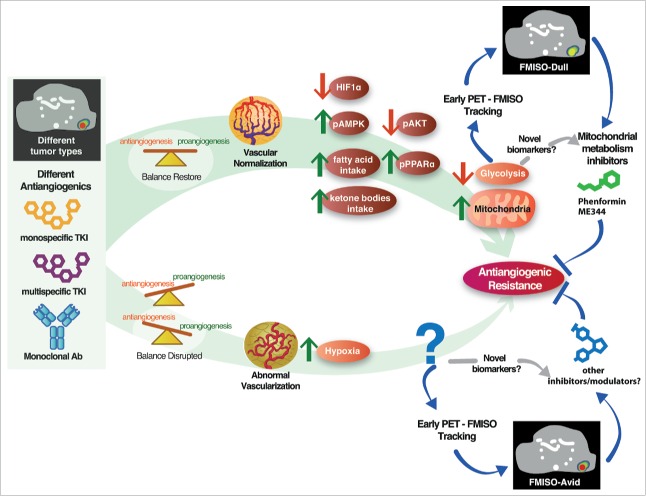Figure 1.
Mechanisms of acquired resistance against antiagiogenic agents. Antiangiogenic agents are diverse in their mechanisms of action; thus, it is not surprising that some agents can tip the imbalance of pro- and antiangiogenic factors in the tumor microenvironment back to normal (upper side) whereas other agents can lead to increased vascular abnormality (lower side). When vascular abnormality and hypoxia are corrected, glycolysis decreases and the tumor switches to mitochondrial metabolism. In this situation, the tumor is highly sensitive to mitochondrial inhibition by phenformin or another agent. However, a tumor can become and remain normoxic after exposure to an antiangiogenic agent. What mediates the acquisition of resistance, and how those mediators can be targeted, is currently unknown. Whether a given antiangiogenic agent (monoclonal antibody or multitargeted tyrosine kinase inhibitor) will tip the balance toward increased or corrected hypoxia cannot be currently predicted; however, hypoxia is easily evaluated by 18F-fluoromisonidazole-PET. Other biomarkers are currently under development, including protein hydroxylation.

